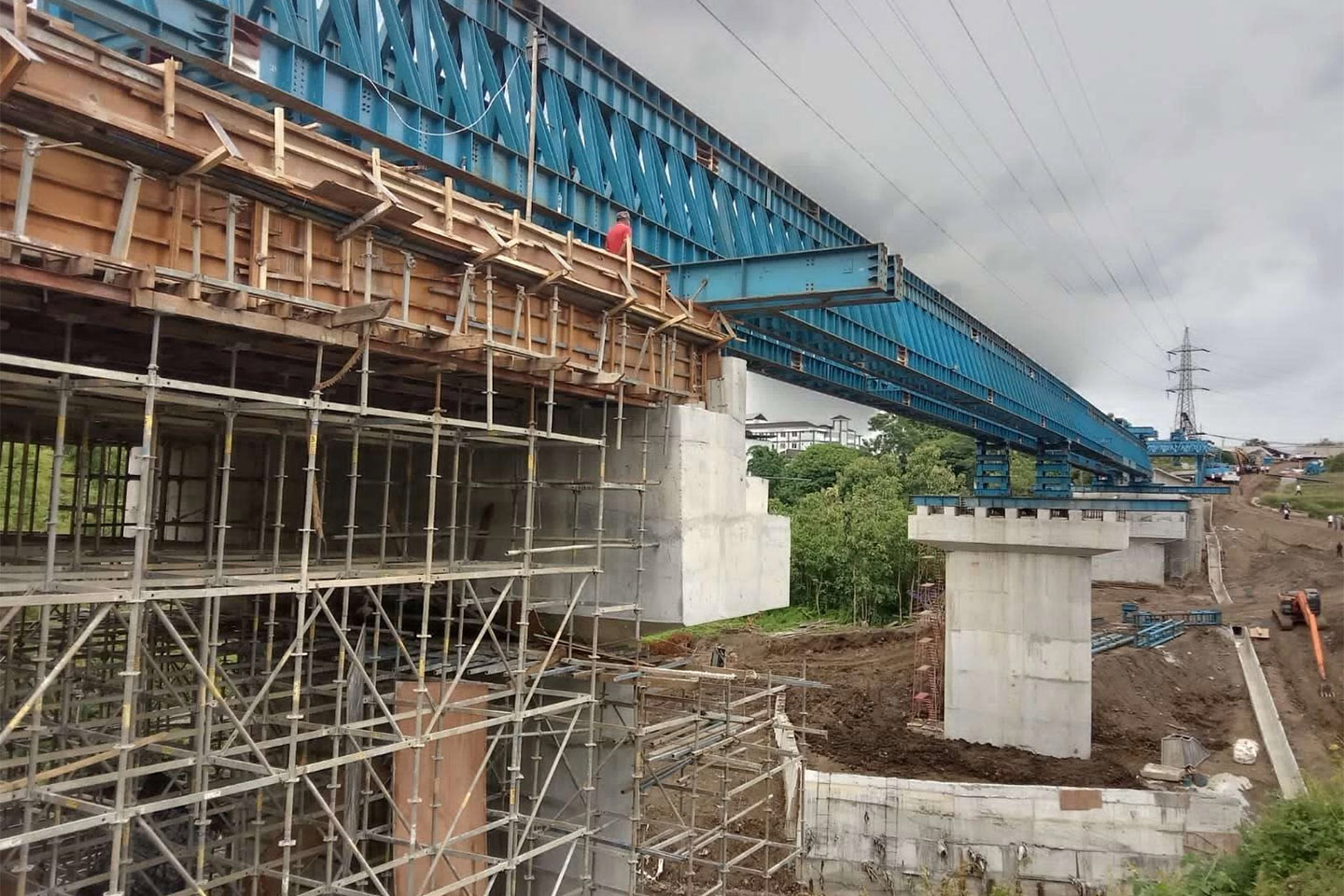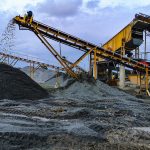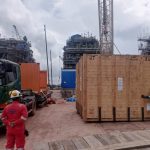Liga Asuransi – Dear readers, how are you? Let’s continue the discussion regarding project insurance. This time is about bridge construction insurance.
Despite the challenges posed by the COVID-19 pandemic, Indonesia plans to increase government cooperation with the private sector to accelerate infrastructure development.
The occurrence of risk accidents in the bridge construction will lead to great losses to the proprietor and construction enterprises if the construction risk of the bridge has not been paid special attention to.
When the accident of a large bridge in the construction phase occurs, the property damage and personal injury are more serious than the ordinary bridge. Therefore, the risk management of large bridges in the construction phase has great significance to prevent the occurrence of construction accidents on large bridges.
As a senior insurance broker with more than 30 years of experience, we would like to discuss risk management and insurance needs in bridge construction.
We hope that the writing was useful for you. If you are interested in this article, please share it with your colleagues so that they also understand like you.
We combined this article from our own experience and with several articles, the link from the source is at the very bottom of this article.
Records of Bridge Construction Accidents in Indonesia
From the information we got from https://www.cnbcindonesia.com/, here are eight construction cases since August 2017:
- On August 4, 2017, a support pole for the Palembang Light Rail Transit (LRT) crashed, leaving two workers dead.
- On September 22, 2017, the bridge of the Bocimi (Bogor-Ciawi-Sukabumi) toll road construction project also fell, killing one person and injuring two people.
- On October 29, 2017, the girder of the Passport toll road construction project (Pasuruan-Probolinggo) crashed, leaving 1 worker dead.
- On November 16, 2017, the crane of the Jakarta-Cikampek II (elevated) toll road construction project fell.
- On December 30, 2017, the girder of the Pemalang-Batang toll road construction project fell.
- On January 2, 2018, the girder rolled over due to the impact of heavy equipment on the Depok-Antasari toll road.
- On February 20, 2018, the head of the bridge pole in the Bekasi-Cawang-Kampung Melayu (Becakayu) Toll Road project collapsed.
- On August 16, 2019, construction on the Cibitung-Cilincing Section IV Toll Road construction project, North Jakarta collapsed
What causes accidents and injuries on the job site?
Accidents on a job site can cause traffic and construction delays, along with added time to investigate and resolve issues, work stoppages, penalties, and fees increased insurance rates, low morale on the job, and significant harm to a contractor’s reputation.
Poor quality work
Work done on a bridge site doesn’t meet regulatory standards or contractual specifications. It costs time and money to fix the mistake. Even more, substandard work can hurt a contractor’s reputation.
Today It is challenging to find workers experienced in bridge-related work. Despite this, it’s worth taking extra time to find the best people. It will only enhance the reputation of the business and help avoid costly mistakes.
Theft
From small power tools to cables and connectors to vehicles, the equipment used on bridge construction sites is an attractive target for thieves, including workers onsite and people not affiliated with the job. Like other risks faced by bridge contractors, theft can have a broad impact.
Theft prevention is by Implementing a sound equipment storage and maintenance policy on all the job sites. Make it a requirement that all tools are signed out at the beginning of a work shift and logged in when they’re brought back at the end of the day.
Structural failure
Bridges are unique structures, and experience in other types of construction projects is difficult to transfer. Always work to code and leverage the latest proven design and building techniques. Always partner with designers, architects, contractors, and subcontractors who are experienced in bridge development work.
What is the process of bridge construction?
A bridge is a structure built to span physical obstacles without closing the way underneath such as a body of water, valley, or road, to provide passage over the obstacle.
Designs of bridges vary depending on the function of the bridge, the nature of the terrain where the bridge is constructed and anchored, the material used to make it, and the funds available to build it.
Bridge construction is a complex and systematic work and there are varieties of risks all the time during the whole phase of bridge construction from construction preparation to construction completion.
New Advanced Technologies for Bridge Design
With the rapid development of new technologies and materials, there have been major changes in how bridges are designed.
Below are the Top 5 New advanced technologies for Bridge Design and Construction.
- Building Information Modelling (BIM)
Building Information Modelling (BIM) is referred to as a process that connects architects, engineers, and construction (AEC) professionals more efficiently in the various stages of construction.
With BIM technology, engineers and designers create 3-D models that include data ranging from the physical characteristics to the functional characteristics of a building.
This information engages architects, engineers, and construction professionals in a multi-disciplinary collaboration for better insight into the project they are working on.
BIM technology generates instant and accurate outcomes for all phases of the project. Furthermore, it provides an integrated platform that connects modelers, constructors, drafters, designers, and engineers in one single model.
- Innovative new construction materials for bridges
New construction materials are emerging in the field of civil engineering. One of the most innovative construction materials considered today for bridge design is self-healing concrete.
Through the life cycle of concrete and due to the various loads occurring in bridges, concrete is prone to cracking.
However, new concrete mixtures that include limestone-producing bacteria are being developed which fill the cracks as they form. This new innovative technology can prevent costly damages that can occur if cracks in concrete are not filled or repaired.
Natural disasters, such as earthquakes and tornados, are one of the most important factors to consider when designing bridges.
The damages generated by these seismic and wind loads create irreversible damage to the different structural elements of bridges, which in the future require very costly repairs.
However, new construction materials are now being used to avoid such issues. One of these materials is Super elastic Reinforcement. This material, also known as a shape memory alloy (SMAs), is used in replacement of the original steel reinforcement commonly used in reinforced concrete.
When steel reinforcement in concrete is subject to stresses causing it to deform beyond its yield point, it will become permanently deformed and will not return to its original shape. On the other hand, super elastic SMAs return to their original shape even after being subjected to high stresses.
- Smart Construction
Today, digital technology is rapidly influencing and transforming the construction industry. Artificial Intelligence (AI), Virtual Reality (VR), Drones, Site Robots, and other smart construction techniques and concepts are now being applied to every construction site. This is not an exception for bridges.
One of the most frequently implemented smart construction technologies used in bridge design is drones with LIDAR sensors and GPS tracking. By using these drones, bridge engineers can pinpoint the exact location on which the bridge will stand, significantly minimizing errors.
- Prefabrication
The bridge construction industry today faces a lot of challenges, including weather conditions, complying with quality assurance, site complications, etc. To address these issues, bridge structural members, such as decks, are constructed off-site, in a controlled environment.
One example is the Precast Concrete (PC) Method. In this method, the decks of the bridges are manufactured in advance at a factory off-site and then transported to the site for assembly. This method greatly reduces construction time and assures quality, thus, increasing efficiency.
- Computer-Aided Software
A bridge design becomes more complicated and powerful, and all-in-one computer-aided software programs are needed. These software programs must be able to process complex modeling challenges and process complicated structural analyses including finite element analysis (FEA), Time History Analysis, etc.
Civil is considered a state-of-the-art engineering software that sets new standards for bridge design and analysis. It provides a user-friendly Graphic User Interface (GUI), intuitive and unique modeling tools, specialization in high-end structural analysis, powerful post-processor functions, and various design check and loads classification features.
bridge construction equipment
The technological aspects of construction influence the modern bridge industry from the very first steps of design.
The bridge industry is moving toward mechanized construction because this saves labor, shortens project duration, and improves quality. This trend is evident in many countries and involves most construction methods. Mechanized bridge construction is based on the use of specialized erection equipment.
Beam launchers are used to erect precast beams. Self-launching gantries and lifting frames are used to erect precast segmental bridges.
Forming carriages are used for segmental casting of the concrete slab of composite bridges.
Portal carriers with underbridge and span launchers fed by tire trolleys are used for transportation and placement of precast spans.
Lifting platforms are used to hoist micro-segments for suspension bridges. Alternate configurations of machines are also available for most construction methods.
New-generation bridge construction equipment is complex and delicate. It handles heavy loads on long spans under the same constraints that the obstruction to the overpass exerts onto the bridge.
The safety of operations and quality of the final product depend on complex interactions between human decisions, structural, mechanical, and electro-hydraulic components, control systems, and the bridge being erected.
Despite their complexity, these machines must be as light as possible. Weight governs the initial investment, the cost of shipping and site assembly, the erection stresses, and sometimes even the cost of the bridge.
Weight limitation dictates the use of high-grade steels and the design for high-stress levels in different load and support conditions, which makes these machines potentially prone to instability.
Movement adds the very important complication of variable geometry. Loads and support reactions are applied eccentrically, the support sections are often devoid of diaphragms, and most machines have flexible support systems. Indeed, such design conditions are almost inconceivable in permanent structures subjected to such loads.
The absence of comprehensive design standards further complicates the situation. Although construction is the most critical moment in the lifetime of a bridge and poor workmanship may irremediably affect quality and durability, bridge construction equipment does not receive any attention or research funding.
Decisions on bridge construction equipment are trans-disciplinary. Safety is the first concern, performance and productivity govern planning and investments, structure-equipment interaction affects the design of bridges and special equipment, risk mitigation is a major issue for contractors and insurance carriers, and quality control of design, fabrication, and operation is strictly related.
Type of insurance needed from Bridge Construction
The following are types of insurance policies that are needed for bridge construction works:
- Construction All Risks Insurance and Third-Party Liability Insurance (CAR/TPL)
- Workmen’s Compensation Assurance (WCA) – BPJS TK
- Employer’s Liability
- Construction Plant and Machinery (CPM)
- Marine Cargo Insurance
- Motor Vehicle Insurance
Why for bridge construction insurance you must use the services of an Insurance Broker?
Bridge construction is not easy work. Not many insurance companies are willing to provide insurance coverage.
It requires extensive insurance knowledge and experience in engineering insurance and knowledge of engineering risks so that insurance coverage is maximized.
The best way to ensure bridge construction is to always use the services of an authorized insurance broker company registered with the Financial Services Authority (OJK).
Insurance brokers design insurance programs that best suit your project’s risk conditions. Find an insurance company that can cover risks at a competitive premium rate.
An important benefit of using the services of an insurance broker company is that you will get help in resolving claims for free. The insurance broker also acts as your advocate for the settlement of insurance claims.
One of the insurance brokers companies with extensive experience in the field of construction insurance in Indonesia is L&G Insurance Broker.
For all your project insurance needs please contact L&G now!
Source:
- https://www.bridgetech-world.com/blogs/the-bridge-club/bridge-construction-technology
- https://bridgemastersinc.com/bridge-contractor-risks/
- https://www.bridge.com/en/blog/newstrends/top-5-new-advanced-technologies-for-bridge-design
—
Looking for Insurance Products? Don’t Waste Your Time and Contact Us Right Now
L&G HOTLINE 24 HOURS: 0811-8507-773 (Call – Whatsapp – SMS)
website: lngrisk.co.id
E-mail: customer.support@lngrisk.co.id
—

















